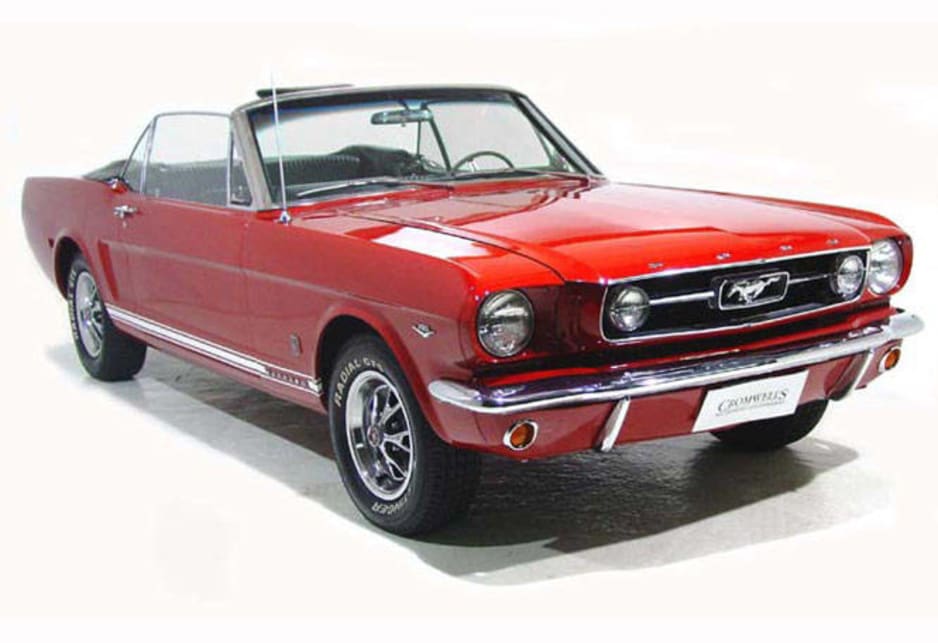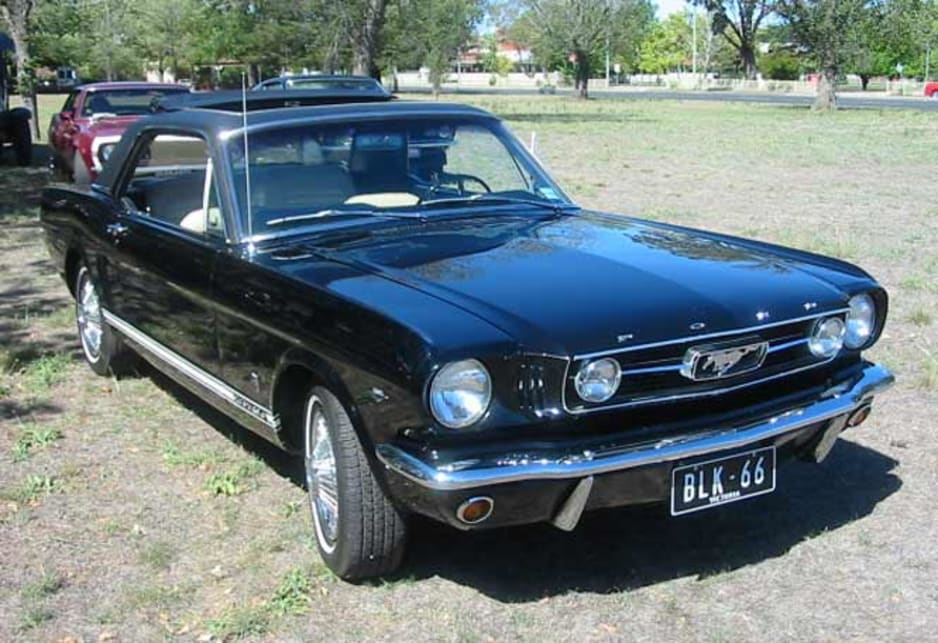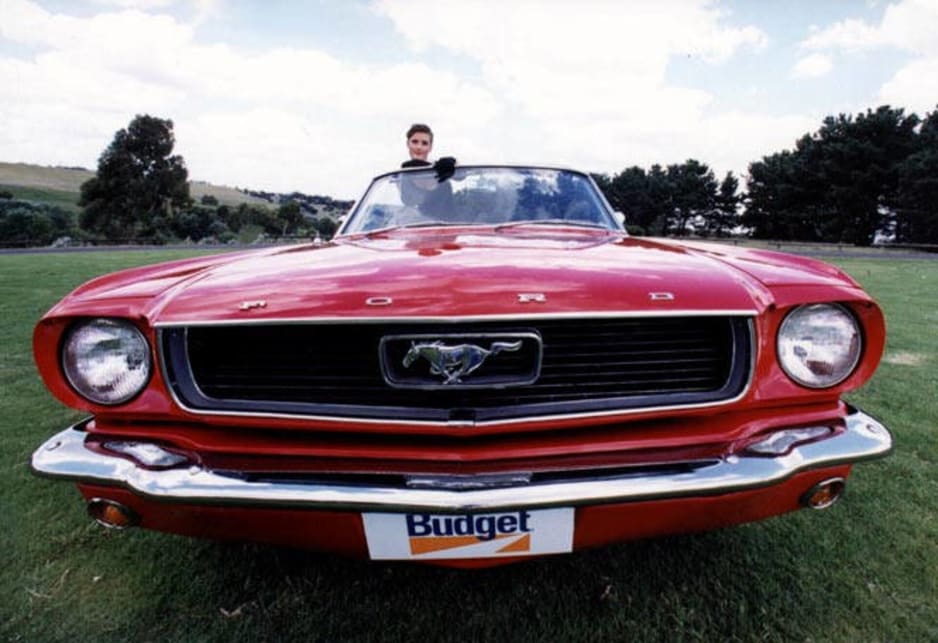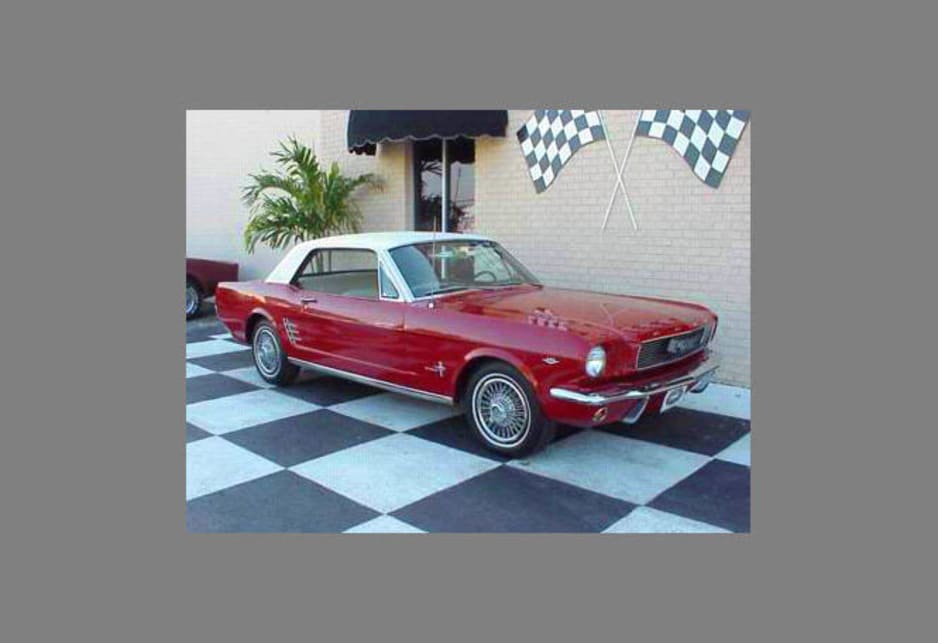
Used Ford Mustang review: 1964-1966
- Ford Mustang
- Ford Mustang 1965
- Ford Mustang 1966
- Ford Mustang Reviews
- Ford Reviews
- Ford Convertible Range
- Ford Coupe Range
- Convertible
- Coupe
- Ford
- Used Car Reviews
- Buying tips
It’s hard to imagine a car that has made a more spectacular debut than the Mustang did in April 1964. Stories abound of Americans queuing at dealerships just to get a look at the snappy new car; there’s even a story of a truck driver driving through a showroom window so distracted was he by the ’stang. Another goes that one buyer slept overnight in his car, right there in the showroom, while his bank cleared his cheque.
Demand was such that sales outstripped production by 6000 vehicles by the end of the first day of sales. Its success was assured.
Can you think of any car that has caused such a commotion on launch? I can’t, but I can tell you that 40 years on the Mustang turns heads today just as much as it did back in 1964.
Now doubt about it the Mustang today is the most popular classic car, bar none. It’s also one of the most practical classics, comfortable and reliable with a simple mechanical package and a ready supply of parts.
In the early 1960s Ford needed a sporty car to combat new models from rival carmakers, and the quickest way to do it they decided was to tweak the Falcon underbody a little, throw in some Fairlane engines and transmissions, and top it off with a sexy new two-plus-two body.
Production started in March 1964, the launch was at the New York World’s Fair in April; the rest is history.
MODEL WATCH
The first Mustangs are referred to as ’64 ½ models because they were introduced in April 1964, halfway through the 1964 model year.
American model years traditionally begin in the August of the preceding year, so the 1964 model year began in August 1963.
Those ’64 1/2 Mustangs came in coupe and convertible variants only, the fastback wasn’t introduced until the ’65 model was unveiled a few months later in August 1964.
Initially engine choices were a 170 cubic inch six-cylinder engine, an ‘economy’ 260 cubic inch Windsor V8 which came with a two-barrel carburettor, and two 289 cubic inch Windsor V8s, a low compression with four barrel carburettor and hydraulic valve lifters, and a high compression ‘ho-po’ with four barrel carburettor and mechanical lifters.
In 1965 the six was enlarged to 200 cubic inches, and the 260 cubic inch V8 was replaced by a two-barrel 289.
Transmission choices for the six consisted of three-speed and four-speed manuals, there was a three-speed manual for the 260 cu. in. V8, and four-speeds for the 289s. All except the ‘hi-po’ 289 could be ordered with Ford’s Cruise-O-Matic three-speed auto.
The suspension was basic, consisting of upper and lower control arms, coils and an anti-roll bar at the front, and semi-elliptic leaf springs at the rear.
Manual steering was standard, but power steering was an option.
Brakes were drums all round, but power assistance and front discs were available as options.
Like all American cars of the time there was a long list of options available – trim, wheels, tyres, brakes, power steering to name just a few – and it needs careful study to fully understand.
Subtle changes were made to the Mustang at each model change. They were mostly confined to the grille, badges and rear quarter panel ‘air scoop’ trim.
BREAKING THE CODES
Mustang enthusiasts talk in codes, which refer to the engine fitted to a car. It’s a letter, the fifth digit of the car’s VIN (Vehicle Identification Number) that is stamped on the inner guard on the left side of the engine bay, and on the warranty plate, which is on the rear face of the left hand door.
The codes are: U – 170 cu. in six (1964); F – 260 cu. in. V8 (1964); D – 289 cu. in. four-barrel carb. V8 (1964): K – 289 cu. in. hi-po V8 (all years); A – 289 cu. in. four barrel carb. V8 (1965/66); C – 289 cu. in. two barrel carb. V8 (1965/66); T – 200 cu. in. six (1965/66).
It’s important to understand them, and check them, because they effectively determine a car’s value.
IN THE SHOP
The first thing to understand about the Mustang is that it’s a 40-year-old car and like all old cars it will probably have plenty of problems.
We all like to dream of finding a pristine one owner low mileage car, but the reality is that most of them have been driven into the ground by owners who never thought of them as classics.
Hope for the best, but be prepared for the worst. That way you won’t be disappointed with what you find, and you might even be delighted when you don’t find as many problems as you expected.
The early Mustang entered the classic car world quite a long time ago, so most of the good cars have been snapped up. There are some good, low mileage cars left in the US, but they’re now bringing top dollar as owners come to realise their worth.
Most of the cars that are left are the ones that have had a hard life, possibly a crash or two, been fixed by back yard mechanics, and have generally been neglected. Expect to find plenty of rust, bad smash repairs, shot mechanics and stuffed trim.
The good news is that parts are readily available at quite reasonable prices, so anything and everything can be fixed. No car is beyond salvation, it all comes down to the depth of your pockets.
When checking for rust lift the carpets and check the floors, there’s every chance the floors will be rusted through. The rear floors are particularly prone to rusting, so check there, and check the right front floor, under the heater on a LHD car, as most heaters leak and rust eventually sets in.
Check the sills carefully for rust, inside and out. It’s a relatively simple fix on coupes and fastbacks, but it’s not so easily repaired on convertibles because the sills provide much more of the body structure on a soft top than they do on the hard tops.
Check the boot floor as these rust as well, and check the usual locations in the bottoms of the doors, bottoms of the front guards, and the rear quarters.
Rust, even extensive rust, doesn’t mean the car can’t be repaired, but the more rust the greater the cost of the repairs.
Mechanically the Mustang is pretty robust, the problem is simply one of age and miles done. The Windsor V8 is a sweet little engine and is pretty tough, but expect it to have worn bores, rings, and bearings. If it hasn’t been rebuilt, then plan on doing it.
If you do rebuild the engine do all in your power to keep the original engine and resist the easy way out of replacing it. A ‘numbers matching’ car will always be worth more than a car of mixed heritage.
Same with the transmissions. Both the auto and the manual ’boxes are robust, but will most likely need to be rebuilt.
There’s nothing sophisticated about the brakes, steering or suspension. All do the job quite well, but will almost certainly need to be rebuilt if they haven’t already been done.
Inside, expect the trim to be split and torn, the plastics broken or missing, but the good news is that they’re all readily available from suppliers here or in the US. Trim kits are available in original materials, patterns and colours to recover seats, all interior hardware can be sourced, right down to the smallest part.
Electrics are a problem with the Mustang. They’re not as unreliable as the infamous Lucas electrics, but don’t expect instruments and other electrical equipment to work properly.
Conversion techniques have improved out of sight over the past 20 years or so, and there are lots of dodgy older conversions out there that don’t steer or stop the way they should. Carefully check the conversion, look for poor welding, cut and welded steering arms, large turning circles that indicate potential problems.
Cars that were converted back in the 1970s and ’80s should be taken to an expert for a thorough check of the conversion to make sure they’re safe.
LOOK FOR
• extensive rust and bad crash repairs
• worn out engines, gearboxes, suspension, steering and brakes
• split or torn trim
• dangerous right-hand drive conversions
• six cylinder models now fitted with V8 engines
• ready supply of affordable genuine or reproduction parts
• check the code
Range and Specs
| Vehicle | Specs | Price* | |
|---|---|---|---|
| (base) | 4.7L, Leaded, 3 SP AUTO | No recent listings | 1965 Ford Mustang 1965 (base) Pricing and Specs |













